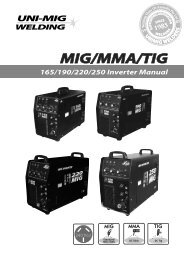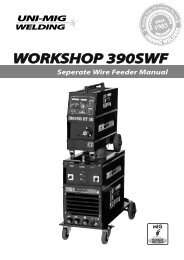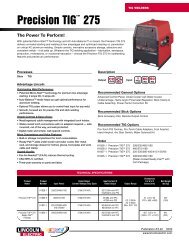Cleaning, Care & Maintenance of Stainless Steel - BJH
Cleaning, Care & Maintenance of Stainless Steel - BJH
Cleaning, Care & Maintenance of Stainless Steel - BJH
Create successful ePaper yourself
Turn your PDF publications into a flip-book with our unique Google optimized e-Paper software.
Atlas Specialty Metals<br />
<strong>Cleaning</strong>, <strong>Care</strong> & <strong>Maintenance</strong> <strong>of</strong><br />
<strong>Stainless</strong> <strong>Steel</strong><br />
Tech Note no. 5<br />
On-Going <strong>Maintenance</strong><br />
Advice is <strong>of</strong>ten sought concerning the frequency <strong>of</strong> cleaning <strong>of</strong> products made <strong>of</strong><br />
stainless steel, and the answer is quite simply “clean the metal when it is dirty in order<br />
to restore its original appearance”. A rule <strong>of</strong> thumb for many exterior building<br />
installations is to clean the stainless steel whenever the nearby glass needs cleaning.<br />
This may vary from once to four times a year for external applications or it may be once<br />
a day for an item in hygienic or aggressive situations. In many applications the cleaning<br />
frequency is after each use. Suggested cleaning intervals are as in this table – these<br />
should be modified by experience. Note that natural rain is an effective cleaner – those<br />
items that are not washed by rain water may need more frequent maintenance<br />
cleaning.<br />
Environment Grade 304 Grade 316<br />
Clean inland 3 – 6 months 6 – 12 months<br />
Polluted urban or industrial Not suitable 6 – 12 months<br />
Coastal / Marine (not splashed) Not suitable 3 – 6 months<br />
Good Housekeeping During Manufacture<br />
<strong>Stainless</strong> steel can be contaminated by pick-up <strong>of</strong> carbon steel (“free iron”) and this is<br />
likely to lead to rapid localised corrosion. The ideal is to have workshops and machinery<br />
dedicated to only stainless steel work, but in a workshop also processing other steels<br />
avoid pick-up from:<br />
• Tooling used with other metals<br />
• <strong>Steel</strong> storage racks<br />
• Handling Equipment<br />
• Grinding wheels, wire brushes, finishing belts<br />
• Contamination by grinding or welding sparks from adjacent carbon steel fabrication<br />
<strong>Cleaning</strong> Methods<br />
Sections below give passivation treatments for removal <strong>of</strong> free iron and other<br />
contamination resulting from handling, fabrication, or exposure to contaminated<br />
atmospheres, and pickling treatments for removal <strong>of</strong> high temperature scale from heat<br />
treatment or welding operations.<br />
Passivation Treatments<br />
• Grades with at least 16% chromium (except free machining grade such as 303):<br />
20-50% nitric acid, at room temperature to 40 o C for 30-60 minutes.<br />
• Grades with less than 16% chromium (except free machining grades such as 416):<br />
20-50% nitric acid, at room temperature to 40 o C for 60 minutes.<br />
• Free machining grades such as 303, 416 and 430F:<br />
20-50% nitric acid + 2-6% sodium dichromate, at room temperature to 50 o C for 25<br />
40 minutes.<br />
Revised May 2006 2 <strong>of</strong> 5


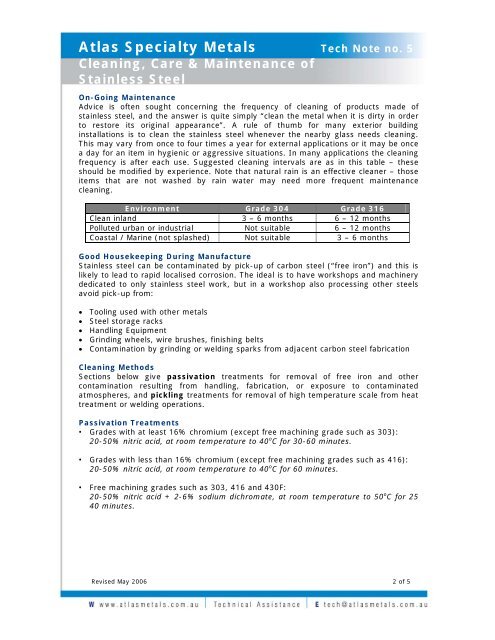


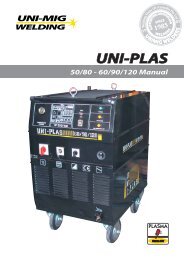
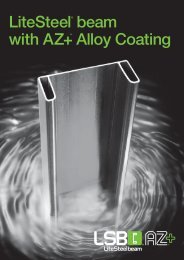

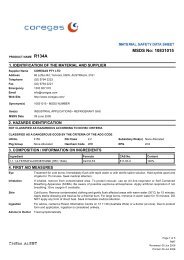

![Weldmatic 175 [internal wirefeeder] - BJH](https://img.yumpu.com/48683580/1/184x260/weldmatic-175-internal-wirefeeder-bjh.jpg?quality=85)



